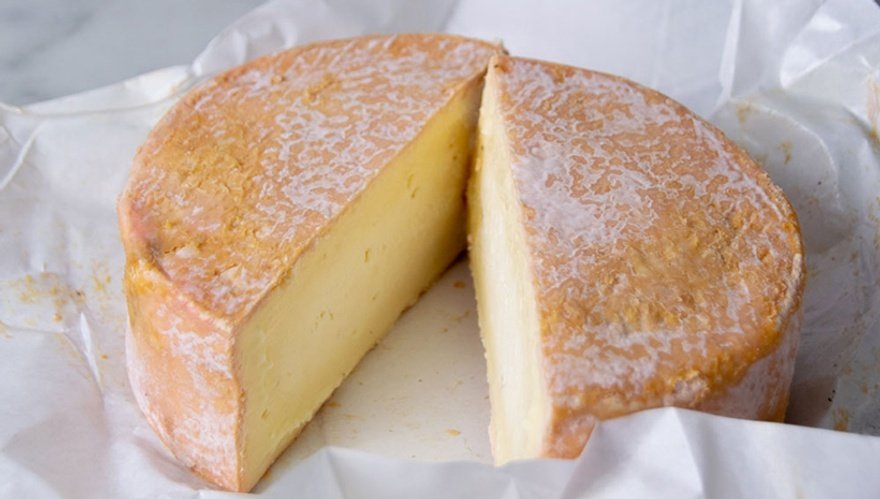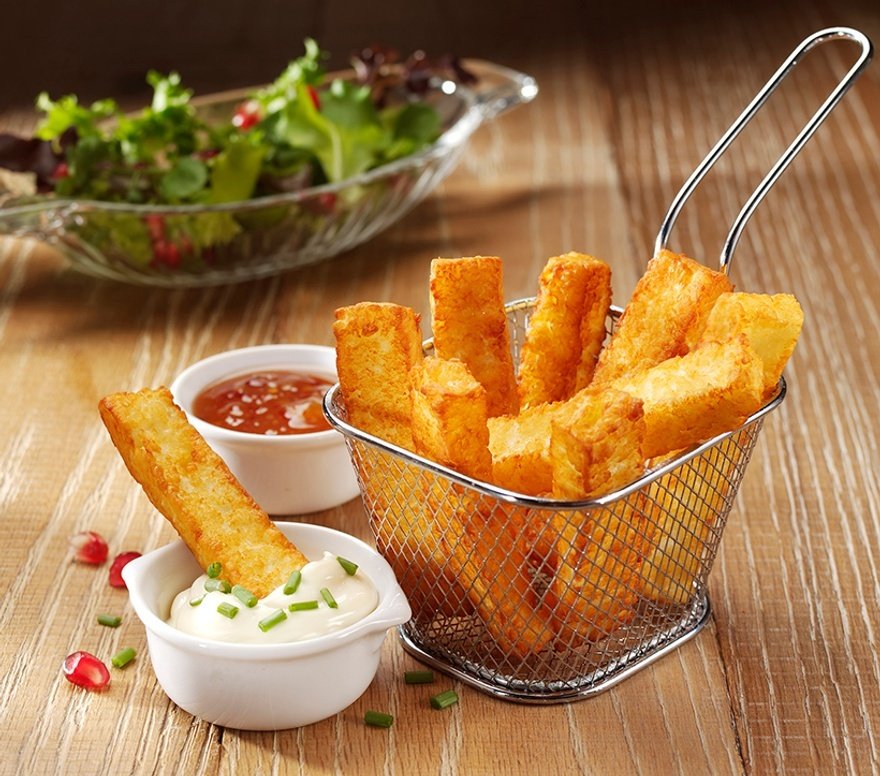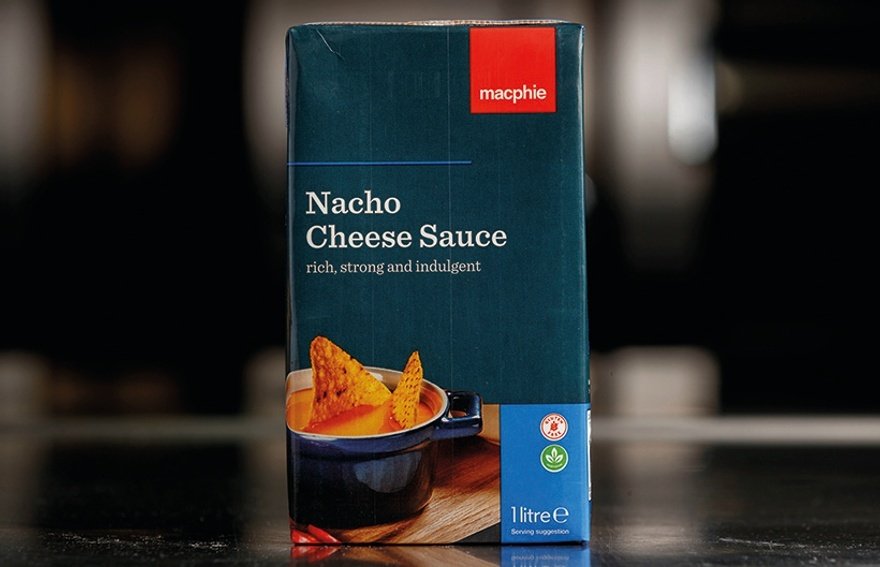Curd is the word: fine cheeses for cooking and eating
The UK is stuffed with a huge range of cheeses, from Ogleshield to Summerfield, so match your customers' taste for quality dairy with the very best you can afford, says Will Hawkes
It's not exactly a secret that the Holborn Dining Room prides itself on its pies. There are four on the menu at any one time, while the private dining space is called the Pie Room – also the name of head chef Calum Frankin's (inset) debut cookbook, the cover of which bears a quote from Jamie Oliver referring to Franklin as "the pie king". The restaurant's website is replete with pictures of Franklin and his staff lovingly preparing pies, while Instagram bulges with images of the intricately decorated results.
But there's a less heralded aspect of this restaurant's offering that is arguably equally interesting: the prevalence of cheese. On any given day, the menu might feature a burrata starter served with green sauce and Colossal olives, or a pie made with Dauphinoise potato, Lincolnshire Poacher and caramelised onion. There could be truffle and Parmesan fries or pies made with beef, Stilton and onion, or Moroccan chickpea and feta.
Franklin is at the forefront of a new appreciation of cheese's value that extends beyond old classics such as macaroni cheese (although he does, inevitably, make a macaroni cheese pie) and cod mornay. And it's an increasingly British affair, too: the rise of local artisan cheese has given chefs a whole cornucopia of new native flavours and textures.
The cheese king
Few people know more about this than Ned Palmer, author of the forthcoming Cheesemonger's Compendium of British & Irish Cheese. A long-time cheesemonger and cheese educator, he's an evangelist for the delights of cooking with cheese, from Cheddar to Vacherin. The key for him is using the best quality you can afford.
"People say to me, oh I'm cooking with it, so I'm just going to buy some bog-standard Cheddar," he says. "My response is: use quality ingredients. If you're one of those people or businesses who can afford it, use good cheese. You've got great olive oil, you use beautiful onions, so why not the best cheese? I don't think people are being parsimonious, I just think they believe it's defiling the cheese in some way to use it in cooking.
"At home I make cheese sauce dishes with classic crumbly cheeses like Cheddar or Lancashire, and at the other extreme, I use up all the nubbly bits of cheese in the fridge to make fromage fort [a traditional French cheese spread], blended with white wine and crème fraîche. Then there are all the dishes in between, like when you get a really hard goats' cheese, you can shave it onto a green salad. I would never throw cheese away."
It's easier than ever for operators to buy high-quality local cheeses that serve a variety of different purposes, as Palmer points out. His new book lists 150 of the finest cheeses to be found in the UK and Ireland.
"There are so many options now," says Palmer. "We've got Vacherin equivalents like Winslade, which is made by Stacey Hedges at the Hampshire Cheese Company, and Evenlode, made by David Jowett [at the King Stone Dairy], both of which can be cooked like Vacherins. Then you've got Ogleshield [made by Montgomery Dairy], which is a raclette-style cheese designed for cooking. Then there are lots of fresh young cheeses, mild cheeses, which lend themselves to being whipped up into a spread with a bit of smoked paprika and garlic, or being tossed through pasta."
Melting point
Different cheeses respond differently to being heated, which means they can have very different uses. "When you want that lovely, stringy cheese, like you get in cartoons of fondue, then you need cheeses with the texture of Comte or Emmentaler – mountain cheeses," says Palmer. "We have some in the UK, like Lincolnshire Poacher or Summerfield from Yorkshire."
Some of the growing popularity of cooking cheese has been driven by the likes of halloumi, which has boomed in popularity in recent years. "Yes, we've seen so much of that," says Palmer. "You think of something like Bill Oglethorpe [who runs Kappacasein in Bermondsey] and his raclette, which has become a phenomenon in London."
According to Rocky Page, food service and industrial controller at Eurilait, there's been a rise in demand for continental cheese eaten hot. Feta and halloumi are particularly popular; according to Kantar data, sales of halloumi and grilling cheese are up by 37.8% year-on-year to December 2020.
"We're experiencing positive feedback from customers who use our halloumi range, which is supplied in a number of formats, from fries to slices, block, cubes and crumble," he says.
"Demand has increased hugely, particularly due to the growth in snacking and sharing trends and the surge in vegetarianism – it provides an ideal meat alternative."
Eurilait's Cypriot halloumi is completely authentic, he adds, and is made using the traditional folding technique, with the milk mix of a higher ratio of sheep and goat than cow, a fat content minimum of 43%, and the addition of mint.
Spread the word
A humble option such as Philadelphia can also be very useful to cooks, too, according to Dean Crews, Philadelphia Professional hotels chef ambassador. "Not only can cheese add a wonderful richness and depth of flavour to multiple dishes, but the addition of a high-quality cream cheese such as Philadelphia can also bring added stability and binding properties to a recipe," he says. "Whether sweet or savoury, breakfast or dinner, its versatility means it can go far beyond the traditional uses of a topping for bagel or as an integral cheesecake ingredient."
He suggests deploying it in a Moroccan-inspired stuffing for roast lamb. "Not only will Philly bind numerous ingredients together, its stability means that it won't collapse in the heat of the oven and will aid the seasoning of the meat from the inside."
The use of cheese in Tex-Mex food has also grown in recent years. Macphie promises that its range of ambient, ready-to-use cheese sauces will take customers on a "journey of flavour". Marketing and insight manager Kirsty Matthews says: "After all the recent lockdowns and travel restrictions, it's no surprise that the appetite for exotic adventures is growing.
"While carefree holidays in far-flung destinations may still be a distance away, we're here to help you satisfy your customers' taste for travel. Our nacho cheese sauce is the perfect partner to Mexican-inspired classics, including nachos, enchiladas, quesadillas and fajitas."
Mellow yellow
Just like cheese, butter is going through a bit of a halcyon era, with new homegrown options joining high-end imported butters on dining tables across Britain. Président Professional teamed up with Pennyhill Park's pastry chef Sarah Frankland and executive chef David Atkinson to challenge the industry to create the ultimate innovative ‘Buttery Breakfast' recipe.
Recipes by the 10 finalists (which included Président butter rosti with poached egg and bacon and coffee jam by Subhan Malik, senior chef de partie at the Beaumont hotel), appear in the ‘Président Professional Breakfast Guide', which can be downloaded from the Lactalis Professional website. The guide is designed to help deliver a "quality breakfast solution that will leave guests with a positive lasting impression of their stay".
It's a sophisticated approach that reflects the evolution of customer expectations in the UK. says Palmer: "I'm sure that being more adventurous and cooking with cheese, and eating dishes made with cheese, will follow. People think nothing of making goats' cheese salads now, whereas 30 years ago, if you said cooking with cheese, it would have meant cheese on toast. A lot has changed."
Suppliers
Eurilaithttps://eurilait.co.uk
Hampshire Cheese Company https:// hampshirecheesecompany.co.uk
Kappacasein www.kappacasein.com
King Stone Dairy www.kingstonedairy.com
Lactalis Professionalhttps://lactalispro.co.uk
Lincolnshire Poacher https:// lincolnshirepoachercheese.com
MacPhie www.macphie.com
Montgomery Cheese www.montgomerycheese.co.uk
Philadelphia www.philadelphia.co.uk
Continue reading
You need to create an account to read this article. It's free and only requires a few basic details.
Already subscribed? Log In









